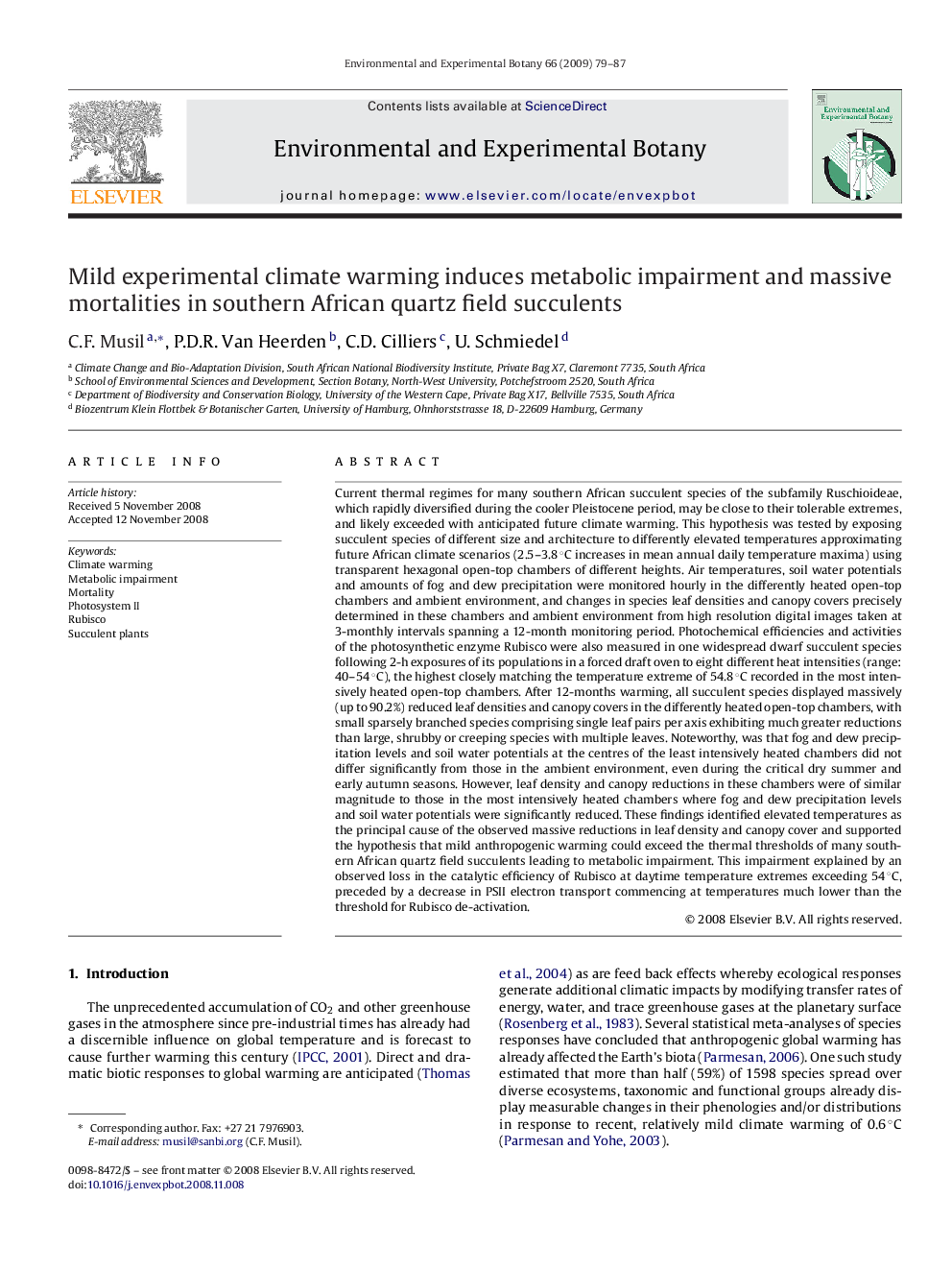| کد مقاله | کد نشریه | سال انتشار | مقاله انگلیسی | نسخه تمام متن |
|---|---|---|---|---|
| 4555079 | 1329242 | 2009 | 9 صفحه PDF | دانلود رایگان |

Current thermal regimes for many southern African succulent species of the subfamily Ruschioideae, which rapidly diversified during the cooler Pleistocene period, may be close to their tolerable extremes, and likely exceeded with anticipated future climate warming. This hypothesis was tested by exposing succulent species of different size and architecture to differently elevated temperatures approximating future African climate scenarios (2.5–3.8 °C increases in mean annual daily temperature maxima) using transparent hexagonal open-top chambers of different heights. Air temperatures, soil water potentials and amounts of fog and dew precipitation were monitored hourly in the differently heated open-top chambers and ambient environment, and changes in species leaf densities and canopy covers precisely determined in these chambers and ambient environment from high resolution digital images taken at 3-monthly intervals spanning a 12-month monitoring period. Photochemical efficiencies and activities of the photosynthetic enzyme Rubisco were also measured in one widespread dwarf succulent species following 2-h exposures of its populations in a forced draft oven to eight different heat intensities (range: 40–54 °C), the highest closely matching the temperature extreme of 54.8 °C recorded in the most intensively heated open-top chambers. After 12-months warming, all succulent species displayed massively (up to 90.2%) reduced leaf densities and canopy covers in the differently heated open-top chambers, with small sparsely branched species comprising single leaf pairs per axis exhibiting much greater reductions than large, shrubby or creeping species with multiple leaves. Noteworthy, was that fog and dew precipitation levels and soil water potentials at the centres of the least intensively heated chambers did not differ significantly from those in the ambient environment, even during the critical dry summer and early autumn seasons. However, leaf density and canopy reductions in these chambers were of similar magnitude to those in the most intensively heated chambers where fog and dew precipitation levels and soil water potentials were significantly reduced. These findings identified elevated temperatures as the principal cause of the observed massive reductions in leaf density and canopy cover and supported the hypothesis that mild anthropogenic warming could exceed the thermal thresholds of many southern African quartz field succulents leading to metabolic impairment. This impairment explained by an observed loss in the catalytic efficiency of Rubisco at daytime temperature extremes exceeding 54 °C, preceded by a decrease in PSII electron transport commencing at temperatures much lower than the threshold for Rubisco de-activation.
Journal: Environmental and Experimental Botany - Volume 66, Issue 1, April 2009, Pages 79–87